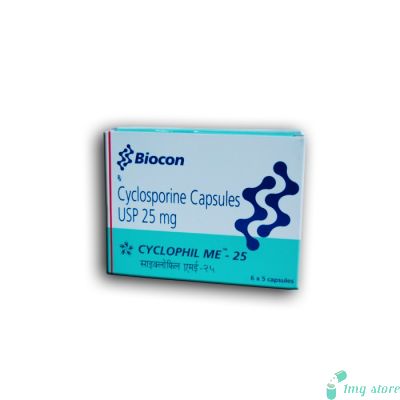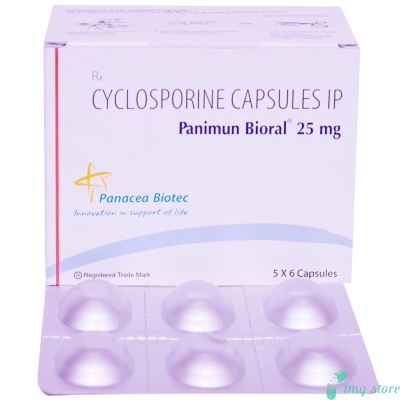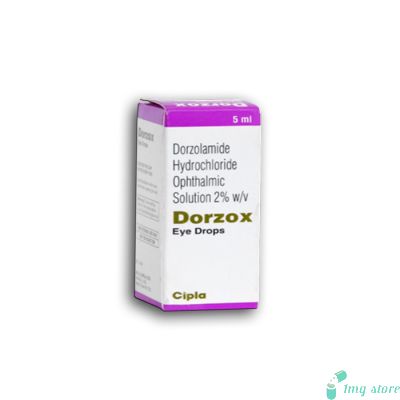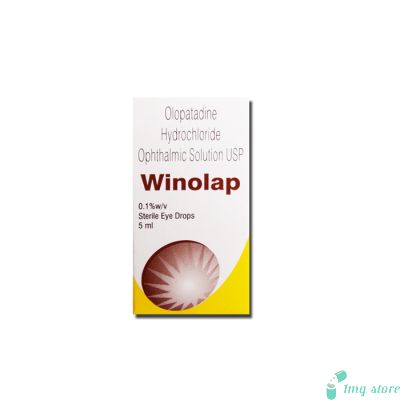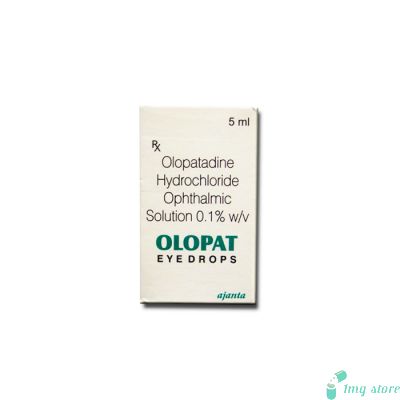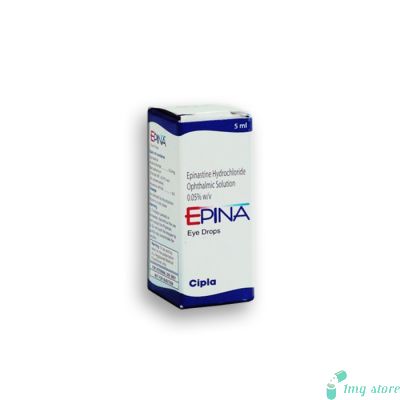Cyclomune Eye Drop (Cyclosporine)
Cyclosporine eye drops, available under brand names like Cyclomune, Restasis, and Sandimmune, are pharmaceutical preparations formulated to address various ocular conditions. These eye drops contain cyclosporine, a powerful immunosuppressive agent initially developed for organ transplantation
Introduction of Cyclomune Eye Drop (Cyclosporine)
Cyclosporine eye drops, available under brand names like Cyclomune, Restasis, and Sandimmune, are pharmaceutical preparations formulated to address various ocular conditions. These eye drops contain cyclosporine, a powerful immunosuppressive agent initially developed for organ transplantation. However, due to its unique properties, cyclosporine has found application in treating ocular disorders by modulating the immune response and reducing inflammation in the eyes. This comprehensive guide aims to provide an in-depth overview of Cyclosporine eye drops, including dosage information, uses, potential side effects, precautions, and drug interactions.
Cyclomune Dosage Information:
Cyclomune Dosage: For patients using Cyclomune eye drops, the standard recommended dosage is typically one drop twice a day in each affected eye. The dosing regimen may be adjusted based on the severity of the condition and the response to treatment.
Missed Dose: If a dose of Cyclosporine eye drops is missed, patients should administer it as soon as they remember. However, if it is close to the time for the next scheduled dose, the missed dose should be skipped to avoid doubling up on the medication.
Overdose: Overdosing on Cyclosporine eye drops can lead to adverse effects. If accidentally ingested or if too many drops are applied to the eyes, individuals should seek medical attention immediately. Symptoms of overdose might include nausea, vomiting, headache, increased blood pressure, and confusion.
Getting a Prescription for Cyclosporine:
Prioritizing your eye health, obtaining a prescription for Cyclosporine is essential. Consult a qualified healthcare professional who can assess your condition, recommend the appropriate dosage, and guide you through the treatment journey. This personalized approach ensures optimal results and safe usage.
Treating Dry Eye Syndrome:
Combat the discomfort of Dry Eye syndrome with Cyclosporine. These eye drops offer targeted relief by reducing inflammation and enhancing tear production. Whether due to environmental factors or underlying conditions, treating dry eyes with Cyclosporine can restore comfort and clarity to your vision, improving your overall eye health.
Buy Cyclosporine Eye Drops:
Discover convenience and quality when you buy Cyclosporine Eye Drops from our trusted online platform, 1mgstore.com. We offer a seamless shopping experience, ensuring you have easy access to this effective ocular solution right from the comfort of your home. Rest assured, your eye care is our priority.
Some of the precautionary measures to be taken while using Cyclomune Eye Drop (Cyclosporine)
- Pregnancy and Breastfeeding: The use of Cyclosporine eye drops/Restasis during pregnancy and breastfeeding should be discussed with a healthcare provider, as potential risks to the fetus or infant need to be carefully weighed against the benefits.
- Contact Lenses: Patients who wear contact lenses should remove them before applying the eye drops and wait at least 15 minutes before reinserting them to prevent potential interactions.
- Immunosuppression: Cyclosporine can suppress the immune system, so patients with active infections or conditions requiring strong immunity should use the medication cautiously.
- Children and Elderly: The safety and efficacy of Cyclosporine eye drops in children and elderly patients may differ, and appropriate dosage adjustments might be necessary.
- Eye Care Regimen: Cyclosporine eye drops should be integrated into a comprehensive eye care regimen, which includes proper hygiene, regular eye examinations, and following the healthcare provider's recommendations.
Key Functions Must Be Noticed of Cyclomune Eye Drop (Cyclosporine)
- Dry Eye Syndrome: Cyclosporine eye drops/Restasis are primarily prescribed for the treatment of chronic dry eye syndrome. They enhance tear production by reducing inflammation and suppressing the immune response that contributes to eye dryness and discomfort.
- Keratoconjunctivitis Sicca: Also known as dry eye disease, keratoconjunctivitis Sicca is characterized by dryness of the cornea and conjunctiva. Cyclosporine eye drops help manage this condition by improving tear film stability and reducing ocular inflammation.
- Other Ocular Inflammatory Conditions: These eye drops may also be prescribed for various inflammatory conditions of the Eye's surface, including conjunctivitis and blepharitis, to alleviate discomfort and inflammation.
- Post-Operative Care: After certain ocular surgeries, such as corneal transplantation, Cyclosporine eye drops might be used to prevent rejection of the transplanted tissue by modulating the immune response.
- Off-Label Uses: In some cases, healthcare providers may prescribe Cyclosporine eye drops for off-label uses, such as treating ocular manifestations of autoimmune diseases like ocular cicatricial pemphigoid.
Some of the Secondary Effects of Cyclomune Eye Drop (Cyclosporine)
- Burning or Stinging: Upon application, patients may experience temporary burning or stinging sensations in the eyes. This is a common but usually transient side effect.
- Blurry Vision: Blurred vision is another potential side effect that usually subsides after a short period of using the medication.
- Redness or Irritation: Some individuals may experience increased redness or irritation in the eyes as their body adjusts to the medication.
- Watery Eyes: Paradoxically, cyclosporine eye drops may initially cause excessive tearing, which typically improves over time.
- Rare Allergic Reactions: In rare instances, individuals may develop allergic reactions, including itching, rash, or swelling around the eyes. If any severe allergic reactions occur, immediate medical attention is necessary.
Frequently Asked Queries About Cyclosporine Eye Drops
Q1. Can I use Cyclosporine eye drops while wearing contact lenses?
Answer: It's recommended to remove contact lenses before applying the eye drops and wait for 15 minutes before reinserting them. This prevents potential interactions and ensures optimal absorption of the medication.
Q2. Are Cyclosporine eye drops safe for children with dry eyes?
Answer: Yes, Cyclosporine eye drops can be prescribed for children with dry eyes. However, the dosing regimen might be adjusted based on the child's age and medical condition, and consultation with a healthcare provider is advised.
Q3. Can I use Cyclosporine eye drops if I have a history of allergies?
Answer: Individuals with a history of allergies can use Cyclosporine eye drops, but they should closely monitor for any signs of allergic reactions, such as itching, rash, or swelling. If such reactions occur, they should consult their healthcare provider.
Q4. How long does it take to see improvement with Cyclosporine eye drops?
Answer: The improvement with Cyclosporine eye drops may vary. Some individuals experience relief within a few weeks, while others may need several months for noticeable results. Consistent and regular usage is crucial to achieving the best outcomes.
Q5. Can I use Cyclosporine eye drops along with lubricating eye drops?
Answer: Yes, it's generally safe to use lubricating eye drops alongside Cyclosporine eye drops. However, it's advisable to administer them at different times to prevent any potential dilution or interference in the absorption of either medication.
Significant Drug Interactions that Require Attention For Cyclomune Eye Drop (Cyclosporine)
- Medications: Patients should inform their healthcare providers about all medications, including over-the-counter drugs, herbal supplements, and prescription medicines, to prevent potential drug interactions.
- Immunosuppressive Agents: Concurrent use of other immunosuppressive agents might increase the risk of immune system suppression and adverse effects.
- Corticosteroids: Combination with corticosteroid eye drops might have synergistic effects but should only be used under the guidance of a healthcare professional.
- Calcineurin Inhibitors: The combination of Cyclosporine eye drops with other calcineurin inhibitors should be avoided due to the potential for increased systemic absorption and side effects.
- CYP3A4 Inhibitors and Inducers: Cyclosporine metabolism is influenced by CYP3A4 enzyme activity. Concurrent use with strong inhibitors or inducers of this enzyme may alter cyclosporine levels in the body.
| Manufacturer | : | Sun Pharma, India |
| Equivalent Brand | : | Restasis |
| Generic Search | : | Cyclosporine |







